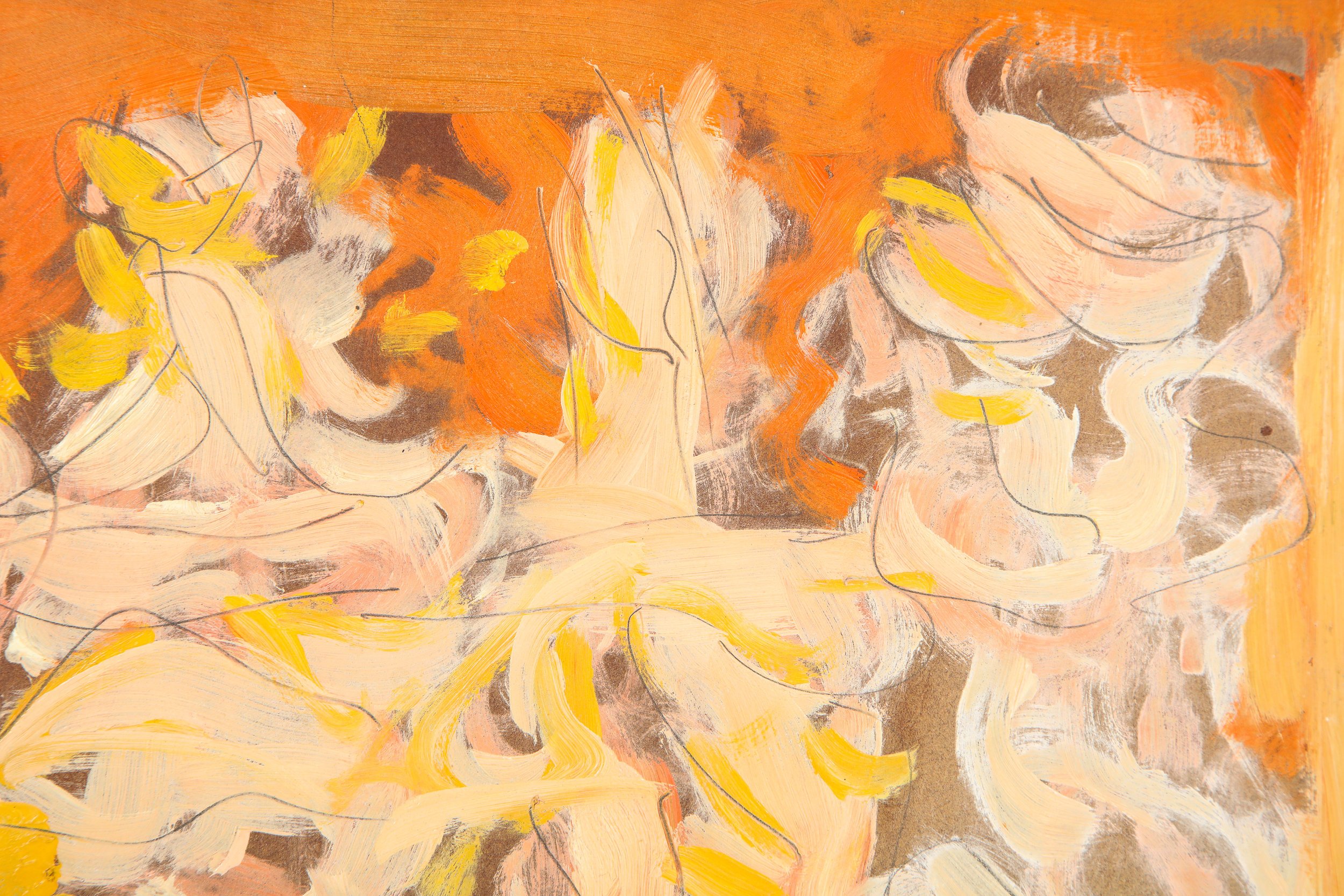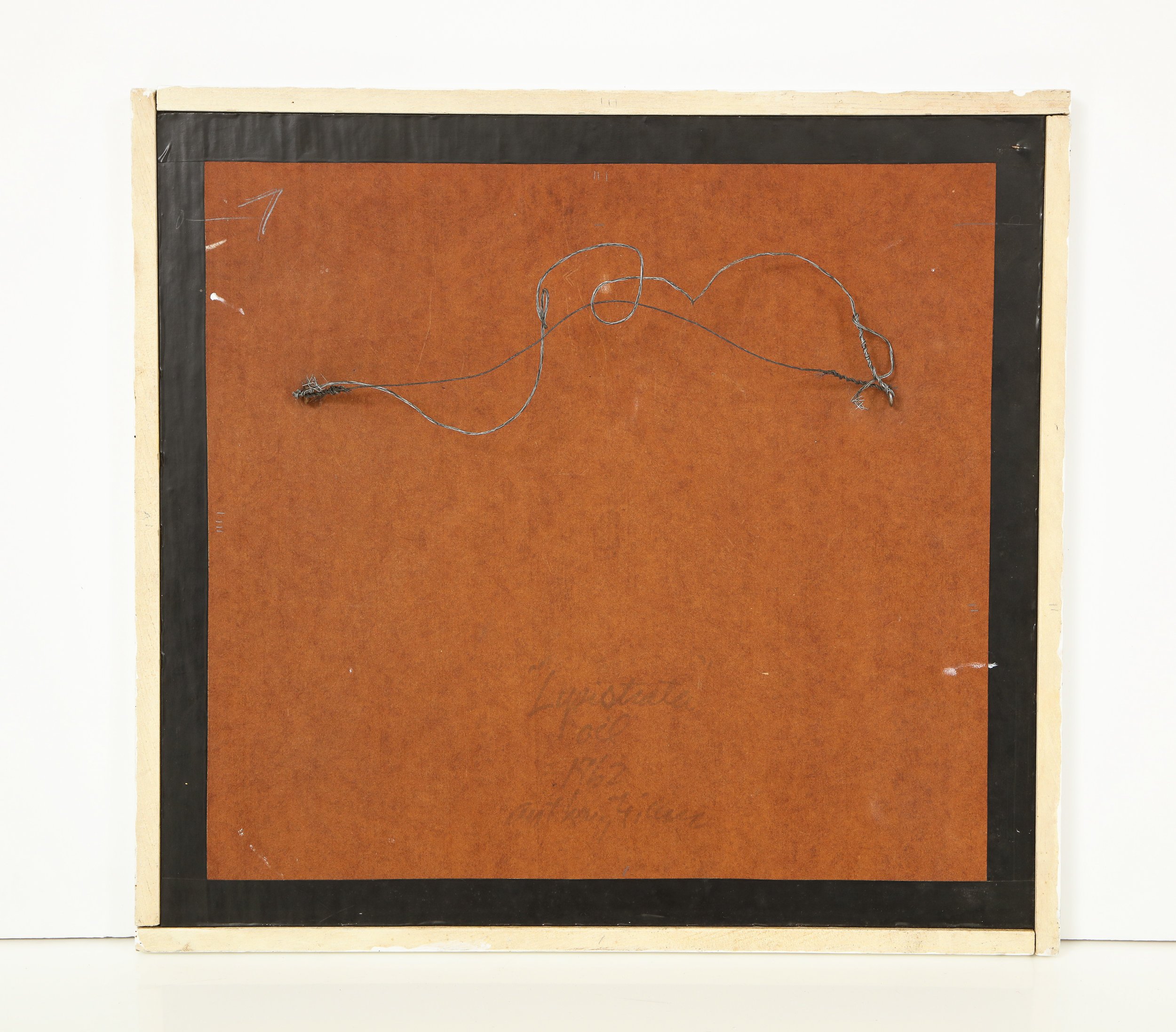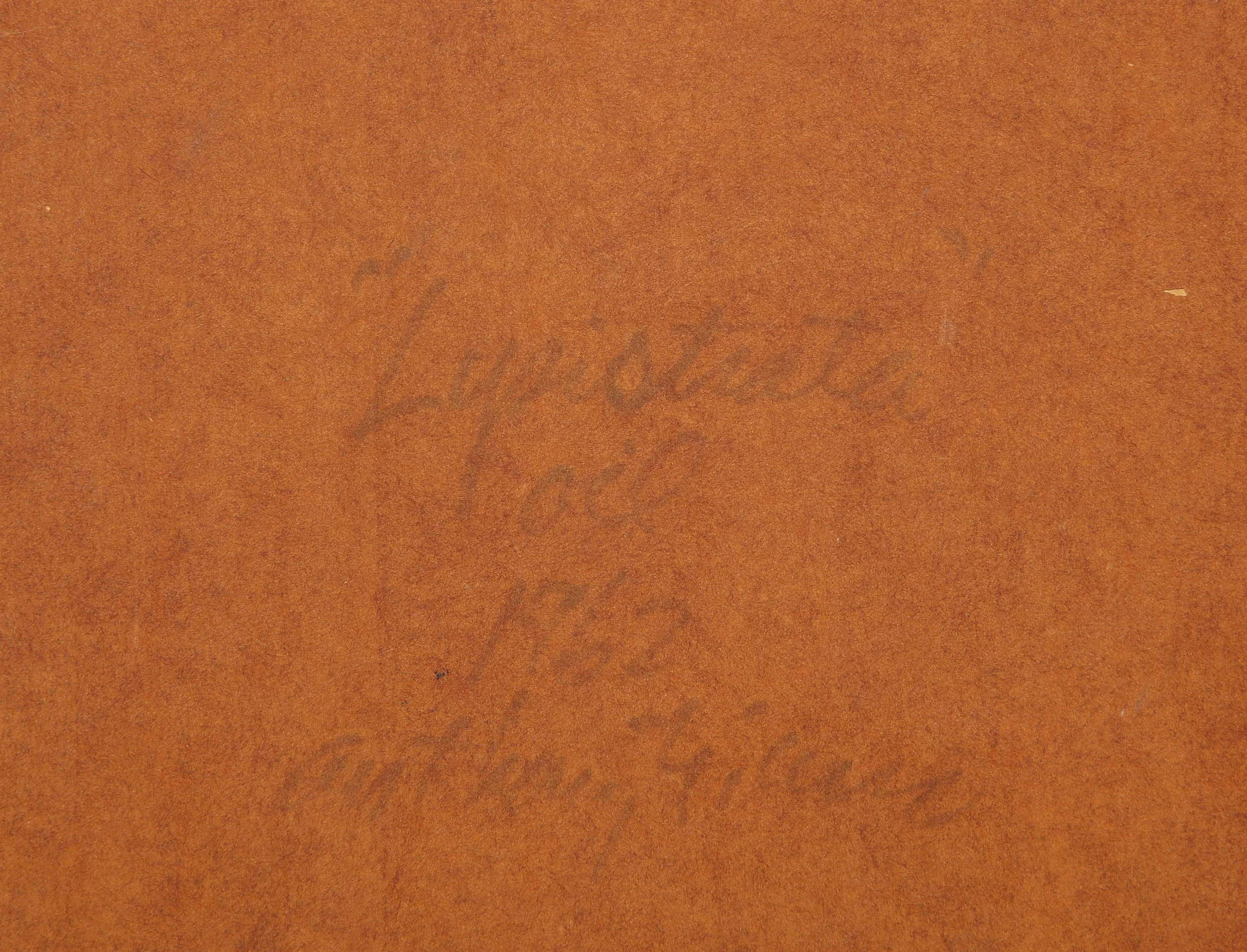 Image 1 of 9
Image 1 of 9

 Image 2 of 9
Image 2 of 9

 Image 3 of 9
Image 3 of 9

 Image 4 of 9
Image 4 of 9

 Image 5 of 9
Image 5 of 9

 Image 6 of 9
Image 6 of 9

 Image 7 of 9
Image 7 of 9

 Image 8 of 9
Image 8 of 9

 Image 9 of 9
Image 9 of 9










Lysistrata' by Anthony Triano
'Lysistrata', signed and dated 1962
Oil on board
Anthony Thomas Triano (1928–1997)
Size: 17 3/4" high x 19 wide x 3 /4" deep
Triano was a painter, sculptor, illustrator and teacher. His works feature natural forms, especially the human form, and tend toward the abstract. He exhibited in 37 one-man shows and numerous group shows. His works can be viewed in collections, such as The Newark Museum, the Montclair Art Museum, the Lowe Museum in Coral Gables, the New York Lithographic Society, Abbott Laboratories, the Hartford Art Foundation, the Monmouth Historical Society, Johnson and Johnson, J.L. Hudson, House and Garden Magazine, Seton Hall University and Law School, the University of Alabama, William Paterson University, Wykeham Rise, the Golden Lemon on St. Kitts, the Library of Congress and Wuhan University in the People's Republic of China. "My enterprise was inspired by the great sculptor Reuben Nakian from whom I inherited a rare insight of history, myth and art," Triano wrote in a brief autobiographical essay. "His most valuable gift to me were a total and passionate study of art of all ages, the importance of subject matter, a constant drawing style and the ultimate way of sculpting with terra cotta." In 1971 Triano was appointed artist-in-residence at Seton Hall University and became a full-time professor the following year.
Lysistrata is the protagonist in the Greek comedy by Aristophanes. Originally performed in classical Athens in 411 BC, it is a comic account of a woman's extraordinary mission to end the Peloponnesian War by denying all the men of the land any sex, which was the only thing they truly and deeply desired. Lysistrata persuades the women of Greece to withhold sexual privileges from their husbands and lovers as a means of forcing the men to negotiate peace—a strategy, however, that inflames the battle between the sexes. The play is notable for being an early exposé of sexual relations in a male-dominated society.
'Lysistrata', signed and dated 1962
Oil on board
Anthony Thomas Triano (1928–1997)
Size: 17 3/4" high x 19 wide x 3 /4" deep
Triano was a painter, sculptor, illustrator and teacher. His works feature natural forms, especially the human form, and tend toward the abstract. He exhibited in 37 one-man shows and numerous group shows. His works can be viewed in collections, such as The Newark Museum, the Montclair Art Museum, the Lowe Museum in Coral Gables, the New York Lithographic Society, Abbott Laboratories, the Hartford Art Foundation, the Monmouth Historical Society, Johnson and Johnson, J.L. Hudson, House and Garden Magazine, Seton Hall University and Law School, the University of Alabama, William Paterson University, Wykeham Rise, the Golden Lemon on St. Kitts, the Library of Congress and Wuhan University in the People's Republic of China. "My enterprise was inspired by the great sculptor Reuben Nakian from whom I inherited a rare insight of history, myth and art," Triano wrote in a brief autobiographical essay. "His most valuable gift to me were a total and passionate study of art of all ages, the importance of subject matter, a constant drawing style and the ultimate way of sculpting with terra cotta." In 1971 Triano was appointed artist-in-residence at Seton Hall University and became a full-time professor the following year.
Lysistrata is the protagonist in the Greek comedy by Aristophanes. Originally performed in classical Athens in 411 BC, it is a comic account of a woman's extraordinary mission to end the Peloponnesian War by denying all the men of the land any sex, which was the only thing they truly and deeply desired. Lysistrata persuades the women of Greece to withhold sexual privileges from their husbands and lovers as a means of forcing the men to negotiate peace—a strategy, however, that inflames the battle between the sexes. The play is notable for being an early exposé of sexual relations in a male-dominated society.
